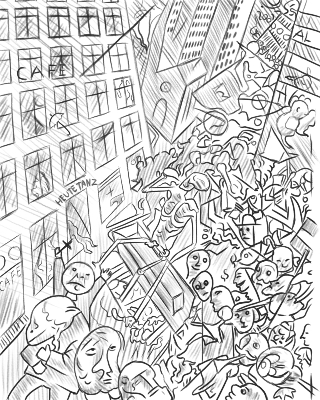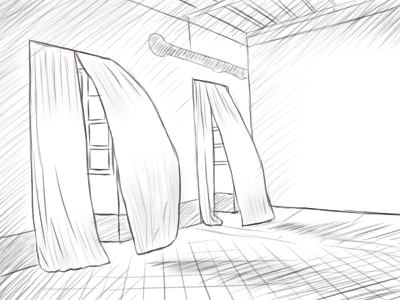Buy YouTube Videos
I am excited to share a vital resource for online art history research called The Art Story. This resource is a growing compendium for art lovers, artists, curators, writers, educators, students and the curious looking for concise and expansive art histories. They have accumulated the largest online encyclopedia of art in the world, with over 1000 topic pages. The Art Story has specialized pages to address your interests, whether you are looking up an artist (Picasso, Michelangelo, or Kara Walker), an art movement (Impressionism, Performance, or Baroque), or an art concept (The Readymade, Renaissance Humanism, or Collage).

The Catalyzer
Founder Michael Zurakhinsky started The Art Story, noticing that art history education wasn’t always accessible or factual online. One of the best resources was Wikipedia, but as an art history learning tool its’ value seemed limited. He was disappointed that prominent arts organizations such as the Museum of Modern Art in New York City only cover their own collection, do not cover the rest of art history, and often provide links to Frontend monitoring tools Wikipedia instead of their own curatorial research on their website. Many encyclopedic art textbooks are terribly outdated. Newer, topic-based books are more inclusive
The Challenge:
As a former museum educator at MoMA, Brooklyn Museum, and Studio Museum in Harlem, I was always craving a comprehensive tool for art history research on the internet. I am happy to have discovered The Art Story, and I use it in researching classes I teach, including my current online course at Pratt Institute, “Brave New World: Daily Artmaking Ritual.”
I took The Art Story for a research spin in contemplation of these unprecedented times. I share here with you how I put together a grouping of artworks navigating the consistent, accessible architecture of the Art Story website. I was able to save hours of research time and enjoyed having an easy, reliable way to travel through the site connecting artist’s works to different art movements, influences, genres, and other concepts.
A Brave New World – Contemplations and Discoveries:
Artists throughout history are known to interpret and challenge the zeitgeist of their times. The year 2020 has amplified ideological battlegrounds and ignited public health and environmental challenges. We battle two concurrent pandemics in the United States and globally; the coronavirus and the fight for human rights spearheaded by Black Lives Matter. While thinking about the global pandemic, we can examine artworks made during past pandemics including the concurrent”
Syphilis and Spanish Flu outbreaks in Post-WW1 Europe and the AIDS crisis in the 1990s, with it’s devastating impact on New York City. Climate change and environmental issues have erupted globally with science denial by the United States government affecting our ability to contain the coronavirus. Many activist artists are making work about these issues, let’s look at art history to compare notes.
Timely Treasures from The Art Story Website:
Artists throughout history are known to interpret and challenge the zeitgeist of their times. The year 2020 has amplified ideological battlegrounds and ignited public health and environmental challenges. We battle two concurrent pandemics in the United States and globally; the coronavirus and the fight for human rights spearheaded by Black Lives Matter. While thinking about the global pandemic, we can examine artworks made during past pandemics including the concurrent”

Syphilis and Spanish Flu outbreaks in Post-WW1 Europe and the AIDS crisis in the 1990s, with it’s devastating impact on New York City. Climate change and environmental issues have erupted globally with science denial by the United States government affecting our ability to contain the coronavirus. Many activist artists are making work about these issues, let’s look at art history to compare notes.

Syphilis and Spanish Flu outbreaks in Post-WW1 Europe and the AIDS crisis in the 1990s, with it’s devastating impact on New York City. Climate change and environmental issues have erupted globally with science denial by the United States government affecting our ability to contain the coronavirus. Many activist artists are making work about these issues, let’s look at art history to compare notes.
German Expressionist George Grosz painted A Funeral: Tribute to Oskar Panizza in homage to writer and psychiatrist Oskar Panizza, known for his critiques against the post-WWI German government. This passionately expressive painting deploys Cubist and Futurist techniques to capture the chaos of plague, war, syphilis, and alcohol. Grosz described The Funeral as a “gin alley of grotesque dead bodies and madmen…. A teeming throng of possessed human animals… think: that wherever you step, there’s the smell of shit.”
George Grosz captured the tight quarters and frenetic pathos of a city riddled with disease. The Funeral is ablaze with color, a tattered flag, a priest waving a glowing white cross, a club festooned with a “Dance Tonight” sign, bodegas and cafés that stand in counterpoint to the huddled masses and tightly-packed flaming apartments. From a contemporary lens, this hallucinatory hellscape speaks to our collective unconscious, as fears of disease and death have colored the urban landscape, where there’s no option but constant motion.”
”Even though George Grosz paints a grim scenario, the colors and the details feel so rich and satisfying to me as a viewer. The Funeral makes me wonder if imagining a monstrous hellscape can be cathartic. Which other artists throughout history have created their own visions of hell to express their societal concerns?

George Grosz captured the tight quarters and frenetic pathos of a city riddled with disease. The Funeral is ablaze with color, a tattered flag, a priest waving a glowing white cross, a club festooned with a “Dance Tonight” sign, bodegas and cafés that stand in counterpoint to the huddled masses and tightly-packed flaming apartments. From a contemporary lens, this hallucinatory hellscape speaks to our collective unconscious, as fears of disease and death have colored the urban landscape, where there’s no option but constant motion.”
”Even though George Grosz paints a grim scenario, the colors and the details feel so rich and satisfying to me as a viewer. The Funeral makes me wonder if imagining a monstrous hellscape can be cathartic.